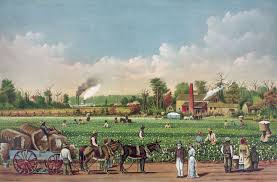Stamp: Caoutchouc (Liberia 1924)
Caoutchouc (Liberia 1924)
01 January (Liberia ) within release Revenue goes into circulation Stamp Caoutchouc face value 1 Liberian dollar
| Stamp Caoutchouc in catalogues | |
|---|---|
| Colnect codes: | Col: LR R1924-18 |
Stamp is square format.
Official stamp of 1923 handstamped "REVENUE" in violetAlso in the issue Revenue:
- Stamp - African Buffalo (Syncerus caffer) face value 25;
- Stamp - African Buffalo (Syncerus caffer) face value 25;
- Stamp - African Palm Civet (Nandinia binotata) face value 2;
- Stamp - Allegory of Trade face value 10;
- Stamp - Ananas face value 50;
- Stamp - Arms of Liberia face value 10;
- Stamp - Bongo (Tragelaphus eurycerus) face value 1;
- Stamp - Caoutchouc face value 1;
- Stamp - Caoutchouc face value 1;
- Stamp - Country Symbols face value 5;
- Stamp - Country Symbols face value 5;
- Stamp - Figure face value 10;
- Stamp - Figure face value 10;
- Stamp - Figure face value 10;
- Stamp - Huts face value 5;
- Stamp - President Charles Dunbar Burgess King face value 5;
- Stamp - President Charles Dunbar Burgess King face value 10;
- Stamp - President Daniel E. Howard face value 5;
- Stamp - President Garretson Wilmot Gibons (1832-1910); Monrovia face value 10;
- Stamp - Robertsport face value 10;
- Stamp - Robertsport face value 10;
- Stamp - Traveller tree face value 25;
- Stamp - Traveller tree face value 25;
- Stamp - Country Symbols face value 5;
- Stamp - Colonists Disembarking face value 1;
|
Data entry completed
56%
|
|
|---|---|
| Stamp Caoutchouc in digits | |
| Country: | Liberia |
| Date: | 1924-01-01 |
| Print: | Lithography |
| Perforation: | VARIOUS |
| Emission: | Revenue |
| Format: | Stamp |
| Face Value: | 1 Liberian dollar |
Stamp Caoutchouc it reflects the thematic directions:
A house is a single-unit residential building. It may range in complexity from a rudimentary hut to a complex structure of wood, masonry, concrete or other material, outfitted with plumbing, electrical, and heating, ventilation, and air conditioning systems. Houses use a range of different roofing systems to keep precipitation such as rain from getting into the dwelling space. Houses generally have doors or locks to secure the dwelling space and protect its inhabitants and contents from burglars or other trespassers. Most conventional modern houses in Western cultures will contain one or more bedrooms and bathrooms, a kitchen or cooking area, and a living room. A house may have a separate dining room, or the eating area may be integrated into the kitchen or another room. Some large houses in North America have a recreation room. In traditional agriculture-oriented societies, domestic animals such as chickens or larger livestock (like cattle) may share part of the house with humans.
Plantations are farms specializing in cash crops, usually mainly planting a single crop, with perhaps ancillary areas for vegetables for eating and so on. Plantations, centered on a plantation house, grow crops including cotton, cannabis, coffee, tea, cocoa, sugar cane, opium, sisal, oil seeds, oil palms, fruits, rubber trees and forest trees. Protectionist policies and natural comparative advantage have sometimes contributed to determining where plantations are located.
In botany, a tree is a perennial plant with an elongated stem, or trunk, supporting branches and leaves in most species. In some usages, the definition of a tree may be narrower, including only woody plants with secondary growth, plants that are usable as lumber or plants above a specified height. Trees are not a taxonomic group but include a variety of plant species that have independently evolved a woody trunk and branches as a way to tower above other plants to compete for sunlight. In looser senses, the taller palms, the tree ferns, bananas and bamboos are also trees. Trees tend to be long-lived, some reaching several thousand years old. The tallest known tree, a coast redwood named Hyperion, stands 115.6 m (379 ft) high. Trees have been in existence for 370 million years. It is estimated that there are just over 3 trillion mature trees in the world. A tree typically has many secondary branches supported clear of the ground by the trunk. This trunk typically contains woody tissue for strength, and vascular tissue to carry materials from one part of the tree to another. For most trees it is surrounded by a layer of bark which serves as a protective barrier. Below the ground, the roots branch and spread out widely; they serve to anchor the tree and extract moisture and nutrients from the soil. Above ground, the branches divide into smaller branches and shoots. The shoots typically bear leaves, which capture light energy and convert it into sugars by photosynthesis, providing the food for the tree's growth and development. Flowers and fruit may also be present, but some trees, such as conifers, instead have pollen cones and seed cones; others, such as tree ferns, produce spores instead. Trees play a significant role in reducing erosion and moderating the climate. They remove carbon dioxide from the atmosphere and store large quantities of carbon in their tissues. Trees and forests provide a habitat for many species of animals and plants. Tropical rainforests are one of the most biodiverse habitats in the world. Trees provide shade and shelter, timber for construction, fuel for cooking and heating, and fruit for food as well as having many other uses. In parts of the world, forests are shrinking as trees are cleared to increase the amount of land available for agriculture. Because of their longevity and usefulness, trees have always been revered, with sacred groves in various cultures, and they play a role in many of the world's mythologies.



